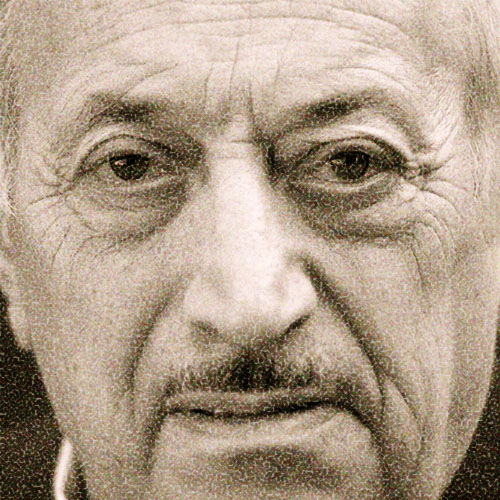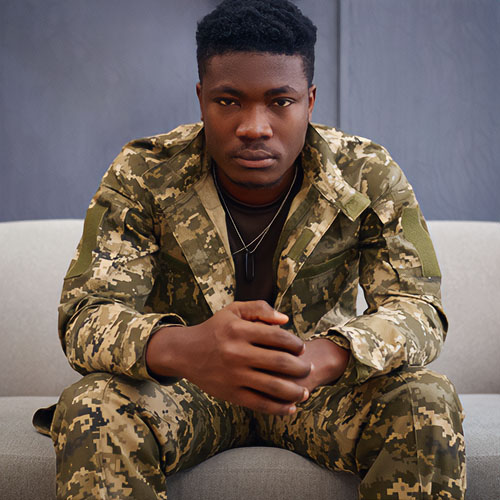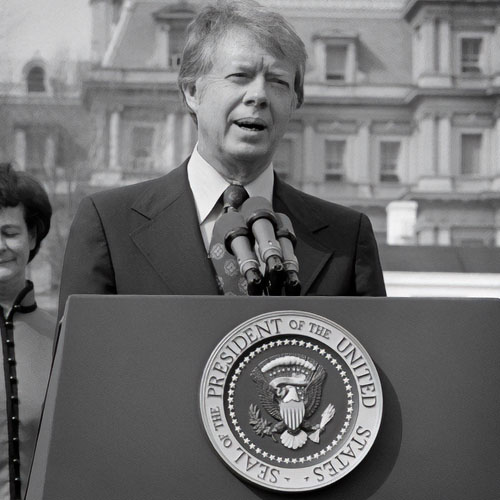Tamar Geller’s Operation Heroes & Hounds matches up shelter dogs with wounded marines, and helps the marines recover and transition back into society.
Going to The Dogs
When Tamar Geller opens the door to her home high in the Bel Air hills, all we notice at first are the tanned, super-toned legs peeking out from underneath her short skirt, and the five sweet dogs that surround them. The petite vegetarian (and former model) quickly invites us in as we enjoy a fuzzy welcome from Duke (a yellow lab-German shepherd mix Geller adopted from a shelter after he’d been rescued from an illegal dog-fighting facility).
Geller, a former intelligence officer in the Israeli army, has been “coaching” dogs for a variety of clients for the past 21 years. (Some clients are not so famous, while one is known simply as Oprah.) She’s become an adviser to the Humane Society of the United States; released a book, The Loved Dog: The Playful, Nonaggressive Way to Teach Your Dog Good Behavior, which explains her “Loved Dog” method of training; battled with Los Angeles to open a cage-free doggie day care and kennel; and launched two nonprofit charities: Another Chance for Love, an eight-week program in which juvenile delinquents train shelter dogs, and Operation Heroes & Hounds (OperationHeroesandHounds.org).
The Operation Heroes & Hounds program started in California at Camp Pendleton as a means to aid wounded marines both in their recovery and in their transition back into society. Participants include members of the United States military who suffer from post-traumatic stress disorder and traumatic brain injuries. These “walking wounded” are paired with shelter dogs in need of behavior modification. Using Geller’s teaching method, service members get to coach and live with the dogs, forming a bond of trust while helping to heal each other’s emotional wounds. Geller’s program is highly beneficial to the service members involved (see sidebar), who develop renewed confidence and life skills, and also to the shelter dogs, giving them an increased likelihood of being adopted. It’s a powerful program that heals and empowers its members.
Before you became a trainer, you were an intelligence officer in the Israeli army. What was that like?
It was tons of fun! It was unbelievable to be a female officer. Everyone goes into the army, but to be an intelligence officer in the Air Force and get to work with the Special Forces? That had never happened before. I demanded it. My boyfriend was a CH-53 pilot-those are the big helicopters-and he was working with the Special Forces. Every-one in my neighborhood was either in Special Forces or pilots. At the time you were not supposed to know they existed. But I knew, and I never played by the rules, even in the army.
Why was that your goal?
It meant I would be working with the most brilliant people and doing things I would never get to do in the outside world. It was to know the intelligence of what was going on in the world during the Iraq-Iran war. You know everything. You know when Saddam Hussein sneezes. As a woman, I did not have many options, and that was the most interesting thing I could have done in terms of adventure.
Are you adventurous by nature?
I’m always looking to live life in the most exciting way. I like to have the uncertainty within the certainty. But sometimes it’s tough. One weekend, I went hiking with the guys and they taught me rappelling. Three days later, we had a mission and one of the guys who taught me was killed. Another time my boyfriend was shot down. I knew whoever was going to fly that day would be shot at, but I couldn’t say anything. Everything turned out okay, but those kinds of experiences make you appreciate things differently.
Do any of the skills you learned in the army carry over to what you do now?
It’s all about strategic planning. You have plan A, plan B, plan C, and plan D. That has served me with dog training because it’s not one size fits all. If I want to teach a dog to sit and instead he backs off, I say, “Okay, you give me new behavior, let me move to plan D.”
You developed your training method partially from watching the wolves in one of Israel’s nature preserves. Were you ever scared?
In the beginning I was, and then I realized there is never blood. Every-thing they did was physical contact, including the way they challenged and played with each other. But at the beginning, until I understood, I was scared. The scientists doing the research explained what the behav-iors meant, and I got books and, all of a sudden, I could see so much more. They are so similar to dogs.
You backpacked through Southeast Asia and then ended up living in Los Angeles. How did that happen?
When I was traveling, I also stayed for a couple of months in Japan and did some modeling. They love short, blonde women. When I came here —I was on my way home to start my life, to be a shrink — my Lonely Planet book said that Venice Beach is great and gave me the name of a hostel.
I went there and didn’t understand English, and they were asking if I wanted to rent the room by the hour. I’m like, Why? I want to spend the night! Who sleeps Just for an hour?
It shows you how much being a foreigner is such a trip. I rented it for the night, and, obviously, did not get much sleep from all the commotion going on. The next day, I was on the boardwalk and I saw a poster for Pink Floyd. They were about to play. I was like, I’d better find where to stay because I’m not going back if they’re about to play I called different dog trainers and wanted to apprentice to see how they were training dogs in benevolent America. It surprised me that the Israeli army training and the way they train here were the same. It’s all about breaking the spirit and building it up again in the way you like. Now we know from behavioral science that that is the most backward thing to do.
When you’re not building team-work, you’re only getting them to do things out of fear, and they will not give you as much as when they’re happy and loving.
Does Tamar Geller clash with the other trainers?
No, they just pooh-poohed me. They looked at me like, Oh, you cute, stupid girl, you foreigner you. I barely spoke the language. But I knew what should be done, though I didn’t think it would be my career.
What is the theory behind the Loved Dog method?
A dog is a little bit like a wolf, but it also has aspects of a toddler. When you address both needs, you have a well-behaved dog. We move them from just being wolves to being a well-mannered part of society. There is also a pleasure-versus-pain aspect. We all do things to gain pleasure and avoid pain.
Tell me more about Operation Heroes & Hounds.
I want people to understand that the wounded warriors have done so much for our country, and it’s not enough to just give them therapy. They really need to practice their skill set. I want people to support this program. We are killing close to five million dogs a year. These dogs cost nothing; to take dogs like that and to incorporate them with these warriors and to give love to these warriors-it’s the least we can do for them.
What sort of transformations have you seen in the veterans involved in Operation Heroes & Hounds?
It’s amazing, the physical change with these people. They start out very withdrawn, very introverted, because they are ashamed of their injuries, of the way they look. They feel they are not worthy because they are trained to be warriors. One of them said to me, “I am a useless, broken piece of machinery” — because he cannot fight anymore. He felt he let his fellow [soldiers] down by getting shot in the face by a sniper. I’m looking at him like, are you freaking crazy? What are you feeling guilty about? It’s amazing to see how they have this one identity, and what we do through the dogs is expand their identity. With dogs and therapy, it’s so much faster than therapy alone. I really wish people would support the program and talk to their congressmen and senators about it. Let’s help these amazing people who sacrificed for our country and help these dogs. It’s a win-win situation. It’s the quickest way of healing these soldiers. We do take donations, because the more we can get the more we can expand the program.
What’s the plan?
I’m working with a few people in the armed forces to figure out how we can expand it, because initially, it was only for people with PTSD, and now we’re looking to offer it to people who are amputees. We did it just with the Marines, and I’m very grateful to General Petraeus’s wife, Holly Petraeus, who made the connection for us. But I am looking to offer it to everybody. In the VA hospitals, there are people who are in service and out of the service. I want people to know about it. We can change the world. This is such a simple thing. Let’s take a shelter dog and hook it up with a wounded warrior. [It’s] an unbelievable return for the investment.
Do you have any future goals regarding the way the military trains their dogs?
Now the military treats dogs like gold. Twentysomething years ago, they didn’t know. In the United States it’s starting to change. With search and rescue, they use toys. They teach the dog to look for a tennis ball. The benevolent way to do it is with games. Then the dog wants more, and gives you 100 percent. If they are doing it out of fear, they are doing the bare minimum and then getting out of there. The Israeli army is using games now. They’ve changed.
There’s one dog-related question that we’d love for you to answer. What do you do when the dog is in the room and you’re trying to get busy?
Give your dog their favorite chew toy. You don’t want to leave the chew toys on the floor all the time because they become bored with them. Give the dog an uncooked marrowbone and put him outside the door.
Heroes & Hounds Accolades for Tamar Geller
These recovering warriors give new meaning to “man’s best friend.”
“I wouldn’t smile at anyone at all before — I was always about business and very aggressive with my facial expressions. Since the dogs came, I’m always just playing with them and grinning and laughing. They make me a lot more at ease and a lot happier. It’s pretty fun!”-Samuel Reyes, machine gunner — Samuel suffered major burns, and his liver, spleen, and kidneys were pierced by bullets.
“This has been just one of the greatest opportunities that has happened for me. Being able to get a companion and someone to share my time with and take me away from all the medical stress and everything else has helped me out so much and bettered my rehabilitation. [She] has been through so much, and I’ve been through so much, and we’re going to work this out together.”-Brittney Hutchins, motor transportation — Brittney suffered a traumatic brain injury in a motor-vehicle accident. She also had two strokes and broke most of the bones on the left side of her body.
“My sleeping has gotten a lot better. I was on medication to put me to sleep and then on medication just to set [my] mind away from these bad dreams — these bad visions that [I] see at night. The dogs just help [me]. I’ve cut out all of my meds now.”-Brian Vargas, 0311 Infantry — Brian was struck in the face by a bullet from an enemy sniper
You may still do your part to help Tamar and her Heros & Hounds project today. Visit her website The Loved Dog.
























